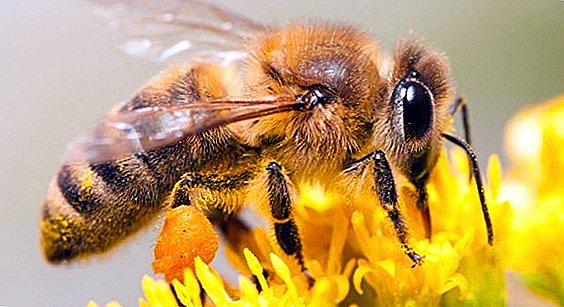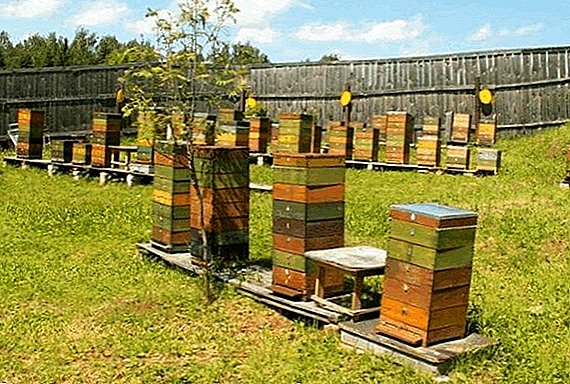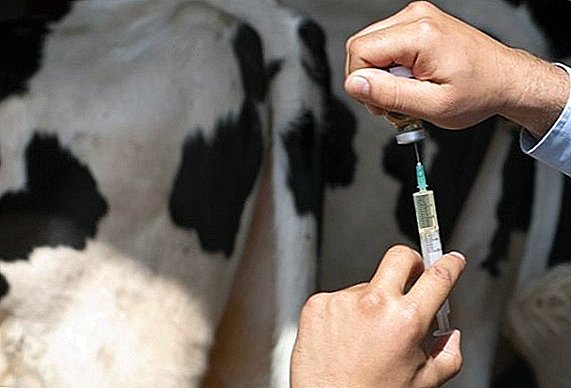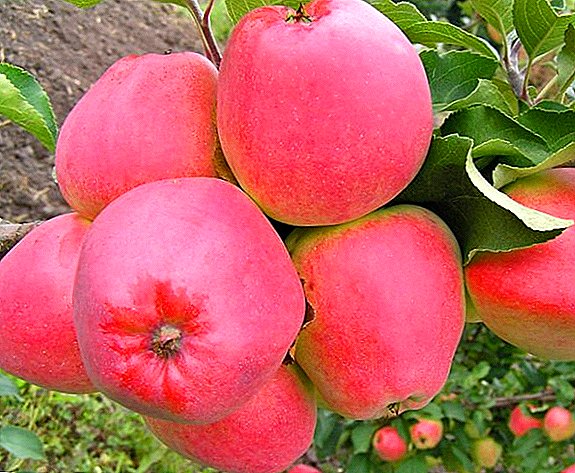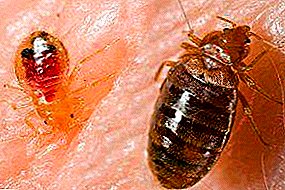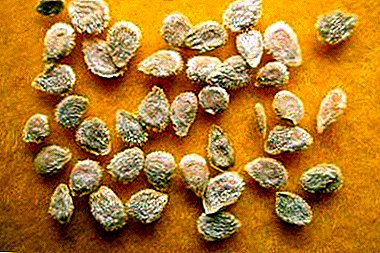
As they say in one popular saying, “what you sow, you will reap”. In a sense, this also applies to planting material.
Seeds before planting must be carefully prepared and processed to improve the quality of the future harvest.
Soaking tomato seeds in potassium permanganate before sowing allows any summer resident or gardener to get strong seedlings that are resistant to various diseases. Consider step by step how and how much to soak.
Useful properties of potassium permanganate
Among the most common formulations for pre-soaking the seeds in summer residents, potassium permanganate solution is popular. If dry material is planted into the soil without disinfection and disinfection, the risk increases that some seeds will not sprout at all, and some will turn into weak adult plants.
Potassium permanganate has a very beneficial effect, due to which it is used for soaking.:
- absorbing manganese, the seeds become resistant to microorganisms and fungal infections that live in the soil and have a inhibitory effect on the growth of bushes;
- the impregnation of seeds with manganese is accompanied by a chemical reaction, which results in the formation of oxygen atoms, which later on combine in the soil with other substances, stimulating the growth and development of the root part of the plant;
- pretreatment reduces the incidence of plants (white spot, black leg, septoria).
Lack of potassium permanganate, as well as its overabundance adversely affect the development of the plant during the period of active growing season.
Pros and cons of soaking in manganese solution
Presowing seed soaking is a preventive measure. This is not a mandatory step in the cultivation of tomatoes, but is recommended by many gardeners. Experts recommend processing only the seed, which was collected personally. For purchased seeds, no additional actions are required, as the manufacturer took care of their primary processing.
 The advantages of soaking in a solution of potassium permanganate include:
The advantages of soaking in a solution of potassium permanganate include:
- acceleration of seed germination for 4-5 days;
- disinfection of seed;
- stimulation of the defense reaction in future plants;
- simultaneous germination of seedlings.
This method of presowing disinfection can be dangerous for seeds if the dosage is not followed. Manganese has a burning effect. If under a microscope we examine the seed of a tomato after the procedure with an excess of potassium permanganate, then we can see that almost all the hairs have burned on it, and it has acquired a black tint. From such seeds to grow a good harvest will not work.
Tomato seeds, like some other vegetables, respond well to manganese. This element is an active participant in redox reactions, and is also part of the enzymes arginase and phosphotransferase. Potassium permanganate is required for active photosynthesis, which is one of the main factors for the development of tomatoes and their yield.
For which varieties of tomatoes is suitable?
Tomato seed dressing is not always required. To date, over 60 of the most popular varieties are known, among which are those for which soaking in manganese is required, and those that produce a good harvest even without this procedure.
Hybrid varieties are represented by planting material, on which manufacturers give a guarantee of resistance to weather fluctuations, diseases and harmful microorganisms. Reliability of obtaining the ovary and rich harvest differ:
- Torquay F1.
- Bagheera F1.
- Mariana F1.
- Orange spam.
- Empire F1.
- Russian Empire.
- Emerald Apple.
- Aunt Valya F1.
These grades do not require prior disinfection and soaking.
Varieties suitable for manganese processing:
- Pink Cheeks.
- Bull heart
- Pink flamingo.
- The cardinal
- Sugar Bison.
Respond well to pre-sowing soaking and other tomatoes, for example:
- Mikado, De Barao.
- Barbara.
- Sugar Bison.
- Little woman
- Wild Rose.
Seeds purchased in the store are not recommended to be soaked, and for their own conviction of a good harvest, pick only the seeds themselves.
How to make a solution?
 Too saturated solution can be detrimental for seeds.therefore it is important to respect the proportions when cooking.
Too saturated solution can be detrimental for seeds.therefore it is important to respect the proportions when cooking.
Experienced gardeners recommend using 1% composition: 1 gram of manganese diluted in 100 ml of water at room temperature.
To prepare a 2% solution, dissolve 1 teaspoonful of the granules in 600 ml of warm water. Ready soaking liquid must have a dark color. and slightly thickened consistency. This is a prerequisite for high-quality disinfection and pre-treatment.
It should not remain undissolved granules. To make it easier to prepare the solution, you can dissolve the permanganate in a small amount of water, and then mix it with the rest.
How and how much to soak before sowing - detailed step by step instructions
Seeds of tomatoes need to sort, selecting the largest from very small. This will improve the quality of the crop.
How to process the seeds of tomatoes before sowing them on seedlings:
- Dissolve in 1 glass with warm water 1 tablespoon of salt.
- Pour the seeds in a saline solution in an enamel bowl.
- Wait until the part settles, and some remain on the surface of the water.
- Separate the seeds separated, rinse in clear water, decompose to dry.
- To soak, prepared seed should be wrapped in a double layer of gauze or covered in a cotton bag. Place the seeds in the diluted composition for 20-25 minutes.
- After the procedure, rinse the seed in running warm water without removing it from the fabric.
- To dry, spread a dry cotton napkin or gauze in a ventilated place, but not under the sun.
Many summer residents recommend as a continuation to use the procedure of additional hardening. It is useful for tomatoes, as well as for cucumbers. When the seeds are completely dry after soaking, they must be poured into a cloth bag and put into the refrigerator for 20 hours.
After that, move the planting material into the room for 5 hours, then again on the shelf of the refrigerator. You need to repeat the cycle 5 times. This procedure allows you to harden the seeds and make them as resistant to temperature changes and possible spring frosts.
How to sow on seedlings?
The quality of the harvest is determined by the quality of seedlings, and its properties are directly dependent on the timing and conditions of planting seeds. For regions with a cold and short summer, germination is suitable until April 1, otherwise the fruit will not have enough time to ripen.
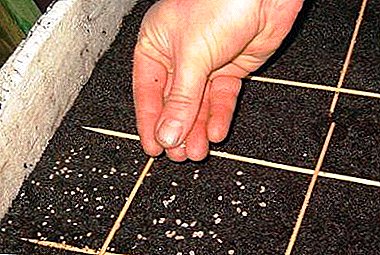 For central regions, where weather conditions allow you to send seedlings to open ground in late-April-early May, the planting period is mid-February. The time and speed of ripening a tomato is determined not only by weather and climatic conditions, but also by a specific variety. It is worth considering when buying them:
For central regions, where weather conditions allow you to send seedlings to open ground in late-April-early May, the planting period is mid-February. The time and speed of ripening a tomato is determined not only by weather and climatic conditions, but also by a specific variety. It is worth considering when buying them:
- early varieties for maturation require 46-50 days;
- middle ripening - 58-60 days;
- late ripening - about 70 days.
For the germination of seeds using high quality soil. Manufacturers offer a large selection of substrates for the cultivation of vegetable crops, which differ in a balanced composition and the optimal level of acidity (in the range of 6.0 pH).
Before planting the seed tomato soil should be held at room conditions.so that she has time to warm up evenly (at least 7 days). Then it is disinfected in one of the ways:
- heating in a microwave for 2-3 minutes;
- calcining in the oven at 200 degrees for 15-20 minutes;
- watering a weak solution of manganese.
Landing process:
- Leave the treated soil for 10-12 days warm so that the microflora useful for the seedlings begins to develop in it.
- Sowing is most convenient in wooden boxes, disposable plastic cups or cut bottles of mineral water. In the landing tanks need to do some drainage holes, be sure to rinse with manganese solution.
- Before planting, place the seeds between two wet gauze strips or toilet paper. Wrap the material in cellophane to create a greenhouse effect and put in a warm place.
- After a few days, the first shoots will appear, which you can gently transfer using prepared tweezers into prepared containers with soil.
- Sowing need to grooves located at a distance of 4-5 cm, and between the seeds to leave 3-4 cm, sealing them to a depth of 1 cm.
- Top seeds sprinkled with dry soil, cover the boxes with film, put on a well-lit window sill. When using cups in each of them is better to plant 1-2 seeds. The optimum temperature for seedling development is 25-26 degrees.
- Periodically remove and spray the film to prevent the formation of a dry crust on the ground.
- As soon as the first shoots are opened, the containers should be opened, providing them with round-the-clock bright lighting for the first 6-7 days.
The painstaking preparation of tomato seeds and their proper pre-sowing treatment are key to the rapid growth of seedlings, and in the future - to obtain a rich and tasty harvest.


